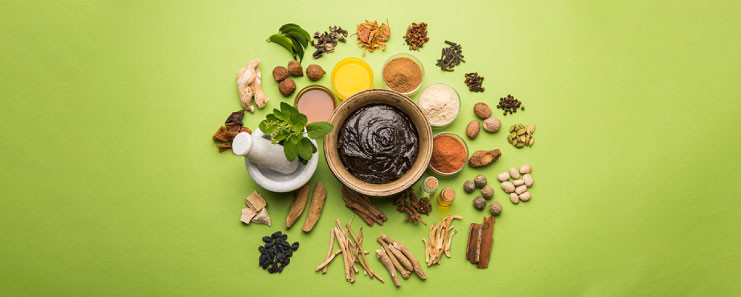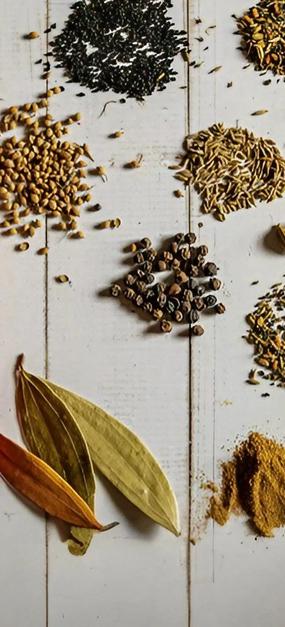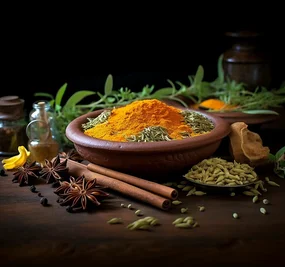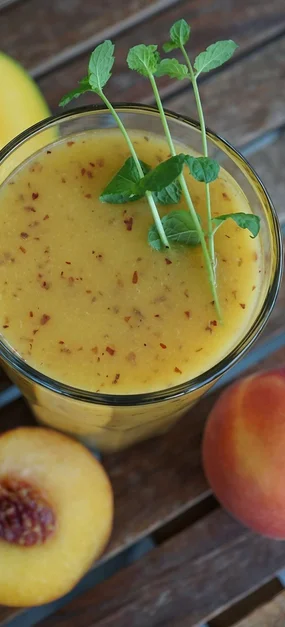Remember the times you were unwell as a child? At the first signs of a cold or fever, a child in many Indian households was asked to drink a warm concoction of herbs, or a glass of turmeric milk. Perhaps many of us have these memories, coupled with pleas to avoid that drink, making faces, or finally consuming it amidst tears. What is it about life that makes an adult want to revisit childhood memories and a child wanting to grow up quickly?
Cut to 2020. The word kadha is synonymous with good health, immunity, and freedom from fear. Because you have checked all the boxes to maintain health during the pandemic. Conversations are wrapping around the exchange of kadha recipes and the psychological comfort of knowing you’re safe from the virus if you’ve downed the glass for a day.
Why is the kadha considered to be an elixir? Could someone throw lights in its resurgence?
The Kadha Craze
What is the ‘in’ thing today has been trending for 5,000 years. Kadha is one of the permitted forms of medicine according to Ayurvedic studies. A mixture of commonplace herbs combined in different proportions to offer relief from a wide range of ailments. Some of these herbs are so commonplace and ubiquitous that one almost doubts their healing abilities.
‘But it’s not exotic enough.’
‘Do I have to add only a pinch?’
‘It’s so readily available.’
‘How can this be effective?’
That is the beauty of this Indian traditional formula. The ancients treated their food literally as food for the soul, the atman. The body is viewed as a vehicle to reach the higher goals in life. If the vehicle is fully functioning, only then will the destination arrive. Food is viewed as medicine, it is also sacred. Food heals the body and the mind. It fortifies you from inside, allowing you to live your best potential in the outer world of samsara.
Perhaps that’s why our kitchens are peppered with unique herbs that have stood the test of time. And now has different cultures and geographies adopting them.
But back to our magical potion, the humble kadha. You could package it, sell a cup for exorbitant prices, make it at home – it’s all giving.
Calling Kadha to the Front
When AYUSH, the health ministry of India announced certain immunity-aiding measures in April 2020, many people made a beeline for the phone. Frantic calls and Whatsapp messages were made to retrieve family-held techniques of making their kadha. In fact, the government’s dispersal of information popularized home remedies like turmeric, honey, and chyavanprash, according to a report by market researcher, Nielsen.
Even though the spices and herbs might be the same, the taste will differ.
How does the kadha work? When spices and herbs like cinnamon, cloves, tulsi leaves, and turmeric powder are boiled, they release essences. These in turn help to build the body’s immunity and help its ability to fight diseases.

From nature’s kitchen:
- Amrut – immunity enhancer
- Amla – gooseberry; its an antioxidant, a rich source of vitamin
- Tulsi – herb; useful in upper respiratory eases; anti-material, anti-viral, cardio-protective and protects the nervous system
- Turmeric – anti-inflammatory, brings down mucus, anti-oxidant
- Jeera (cumin) – brings down gastric disturbances
- Black pepper – digestive and respiratory system
Know your Immune System
Interestingly, according to Ayurveda, there are three kinds of immunity:
* Sahaja (congenital or natural): This is the natural immunity or strength which comes from the parents and is inherited. According to Ayurveda’s theory of genetics, genetic factors are defined at the cellular level. If both the parents’ genetic makeup is healthy, the same health is seen in the children. If the genetic makeup includes susceptibility to certain diseases, those will be carried over into the next generation.
* Kālaja (time): Kalaja bala is the strength depending on factors around time. The time of the year (seasons and climate) and age of the person has their impact, marked or subtle, on immunity. The time of day, season, and one’s age are important factors for enhancing immunity. Strength is greater in the early morning than in the evening. Certain places have stronger and healthier climatic and environmental conditions.
* Yuktikrata (acquired): Yuktikrata bala represents acquired immunity, the immunity developed through diet, lifestyle, rasayana, and yoga (practices). Rasayana is one of the eight limbs of Ayurveda and deals with the sustenance of health. It rejuvenates the whole physiology, producing resistance against disease both physically and mentally.

The kadha is one effective way to build immunity. However, good health and effective immunity is the culmination of a healthy and disciplined lifestyle.
Some Things to Know
* The kadha helps to build the immune system. It cannot be used as the only medicine if diagnosed with COVID-19.
* The kadha is one lifestyle addition to make. Sleep, good diet, and exercise are essential.
* If you’re experiencing acidity or any other symptoms, you could have it every alternate day. It would be good to consult an ayurvedic doctor for the same.
* If you’re regularly consuming haldi milk, a pinch of turmeric is enough.
* Too much of anything is best avoided. Use tiny proportions of the herbs. Excessive consumption can cause problems like nose bleeding and persistent acidity.
* Some ingredients are good for certain seasons. It’s best to understand the seasonal variations, a consultation with an Ayurvedic doctor would help.
Soothing Kadha Recipe
2 spoonful of jaggery
1/4 tsp – ginger powder
1/4 tsp – turmeric powder
1/4 – black pepper
1/4 cumin powder
5-7 basil leaves
Mix all these ingredients in one glass of water. Bring to a boil, allow to cool and drink warm.
Like it, love it. You could avoid it too. Yet you cannot help but raise a glass to this superhero.
Some of the inputs are based on the book, ‘Ayurveda Simplified: Body-Mind Matrix’ written by Dr. Nisha Manikantan, founding director of Sri Sri Ayurveda.
If you’d like to learn more about your immune system and secrets to build it, join the Online meditation and Breath workshop.





















